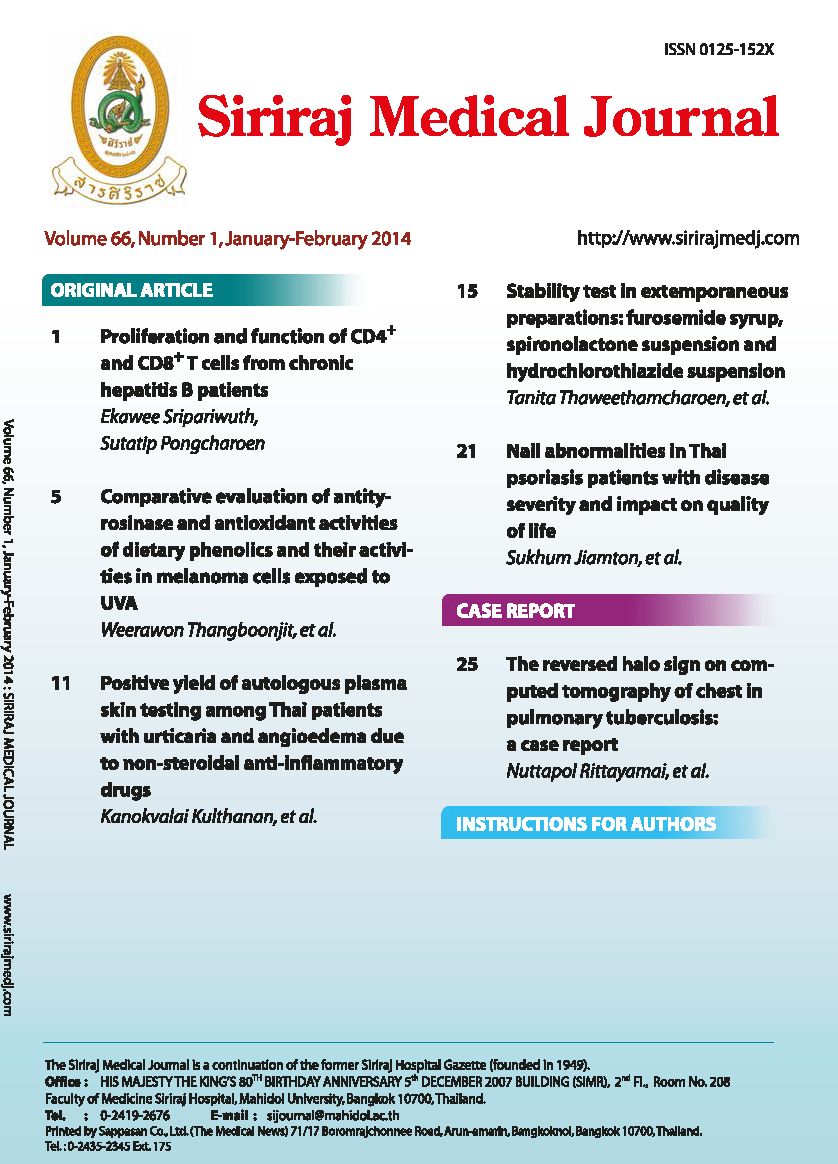Nail Abnormalities in Thai Psoriasis Patients with Disease Severity and Impact on Quality of Life
Abstract
Background: Nail abnormalities are common in psoriasis. The relationship between nail abnormalities and disease severity or impact on quality of life has scarcely been reported.
Objectives: The aims of this study were to find the proportion and types of nail abnormalities among Thai psoriasis patients and to assess the association between nail abnormalities, disease severity and the quality of life.
Methods: A retrospective medical record review of 1,027 psoriasis patients who attended the dermatology clinic from Fe- bruary 2005 to May 2008 was performed. Demographic data, type of nail abnormalities and severity of psoriasis as well as the dermatology life quality index (DLQI) were recorded.
Results: Nail abnormalities in Thai psoriasis patients were diagnosed in 63.4% of them. The most common type was ony- cholysis (45.9%) followed by nail pittings (42.8%). Nail abnormalities were significantly associated with higher psoriasis area severity index (PASI) with adjusted odds ratio of 2.45 (95% CI 1.86-3.23, p<0.001) and associated with DLQI with adjusted odds ratio of 1.61 (95% CI 1.00-2.58, p=0.05).
Conclusion: Nail abnormalities in psoriasis are common and associated with disease severity and quality of life of patients.
Keywords: Psoriasis, nail abnormalities, quality of life
Siriraj Med J 2014;66:21-24
Downloads
Published
How to Cite
Issue
Section
License
Authors who publish with this journal agree to the following conditions:
Copyright Transfer
In submitting a manuscript, the authors acknowledge that the work will become the copyrighted property of Siriraj Medical Journal upon publication.
License
Articles are licensed under a Creative Commons Attribution-NonCommercial-NoDerivatives 4.0 International License (CC BY-NC-ND 4.0). This license allows for the sharing of the work for non-commercial purposes with proper attribution to the authors and the journal. However, it does not permit modifications or the creation of derivative works.
Sharing and Access
Authors are encouraged to share their article on their personal or institutional websites and through other non-commercial platforms. Doing so can increase readership and citations.











